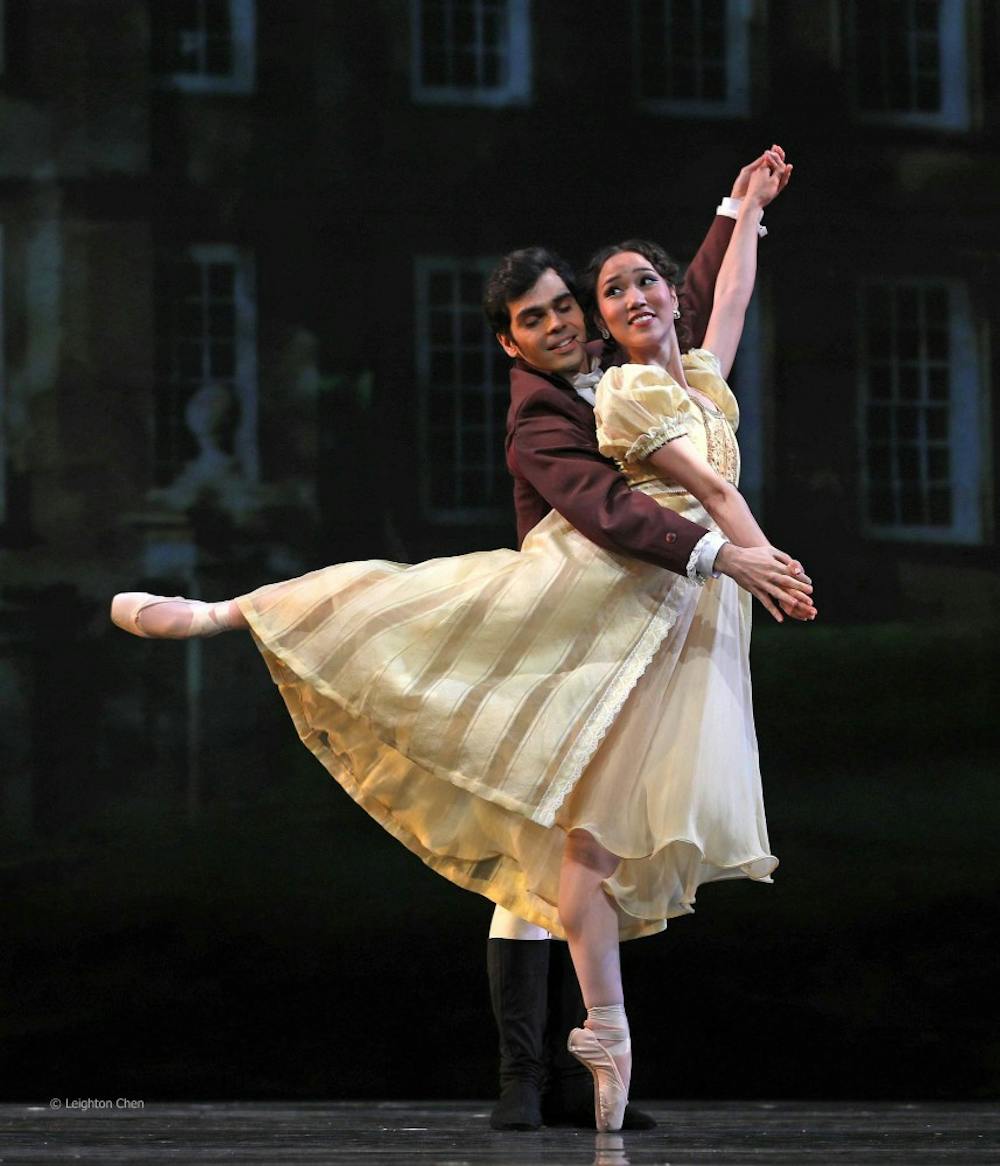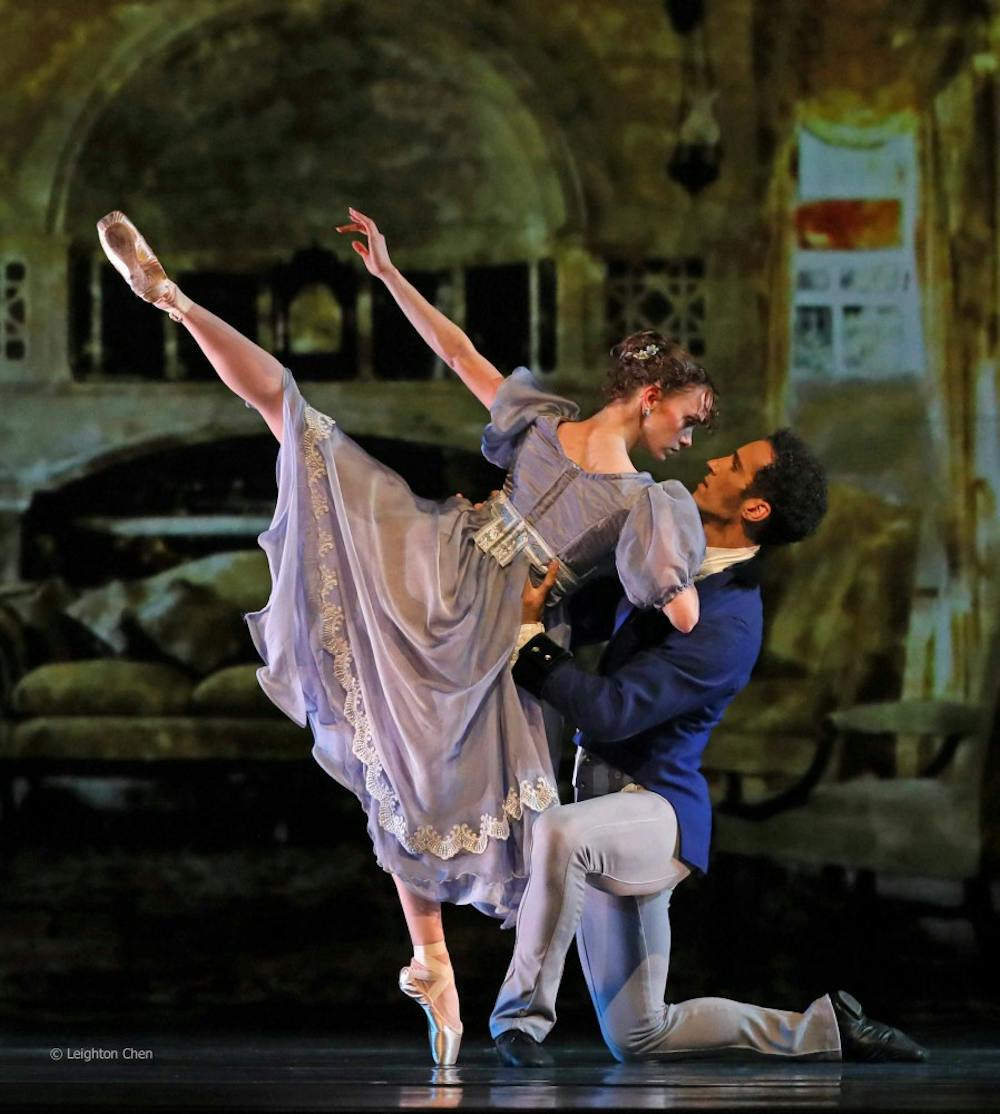This upcoming weekend, at 8pm on March 2nd and 3rd, the American Repertory Ballet is bringing the 1813 Jane Austen classic Pride and Prejudice to the stage at The Annenberg Center's Zellerbach Theatre. Elizabeth Bennet and Mr. Darcy, well–known from book pages to movie screens, are now being transported to the stage by choreographer Douglas Martin who is retelling the love story through dance.
The ballet is the culmination of over five years of work, debuting just last year in April of 2017. In making the shift to the stage, Douglas had tried to emulate the novel as much as possible. In 2 hours and 7 minutes, the show relives the storyline in order to, as he puts it, “relate the splendor and the total package.”
That would seem a difficult task. After all, “what Jane Austen did so wonderfully was the expression of emotion and thoughts,” Douglas said. To translate that expression of emotion and thoughts without dialogue? Even more difficult. But, for Douglas, not impossible. Starting with little other than a profound love of Jane Austen, the process began with an in—depth analysis of the book. That meant going through the novel, chapter by chapter, looking for the parts that advanced the narrative. The goal was to capture not just the vivid, sensory details, but also the feelings, emotions, mood. That’s why the ballet can’t be considered another rendition of the novel. The audience does not just see, but also feels.

And to do so required every sensory part of the show to be parallel with the intended emotions, including the choreography and the music. From the beginning, Douglas knew he wanted to use music from the nineteenth century to reflect Austen’s era. He wanted the music to help "tell the story of each section.” But Austen herself had her preference of composers, so much of the score consisted of her personal favorites, such as Schubert, Field, and Mendelssohn.
When the music was finished, Douglas went back through his libretto (the text of the ballet, much like the screenplay) to overlay the music, trimming and engineering it as it went along. After a year of this, he had everything.
Except the dance. But having dissected the novel through and through, Douglas “knew exactly what [he] had to do” once he arrived at the studio. The reason it comes so easily to him is that dance is, as he describes it, “his dialect.” In fact, maybe it’s that there is no dialogue that makes writing the show all the easier for him. The bending of the torso—that’s a question. The lifting of the body—that’s the response. Douglas said, “what people forget all the time is that the body is a language we all use almost equal to our vocabulary. Your expression and the way you hold your body and your temperament—all of it is just language.”
So the soft and caring Jane Bennet uses soft movements to show her nurturing side, while the playful Lizzy uses sharper and more definitive ones to demonstrate her more extraverted side. In a way, without dialogue, Pride and Prejudice becomes an adaptation of the book that’s more open to interpretation and more far–reaching to the audience on an interpersonal level.
The choice of Pride and Prejudice was designed to show exactly this. It’s not another performance of Swan Lake or a fairy–tale, but rather a story entangled in the numerous familial and romantic relationships, as is reality. It’s a story with a complexity that reflects the work behind it.
At the same time, the show is what Douglas would describe as a “perfect example of art and why we go to see art” because “art tells us about who we are.” Using his “dialect,” it tells of conversations, emotions, and the human experience. Whether or not you are a fan of Jane Austen, Pride and Prejudice is an experience intended to connect you to not just the characters on stage, but also yourself.
The show will be performing this upcoming weekend at Zellerbach Theatre. Tickets are $20 in advance with the promotion code: student.

